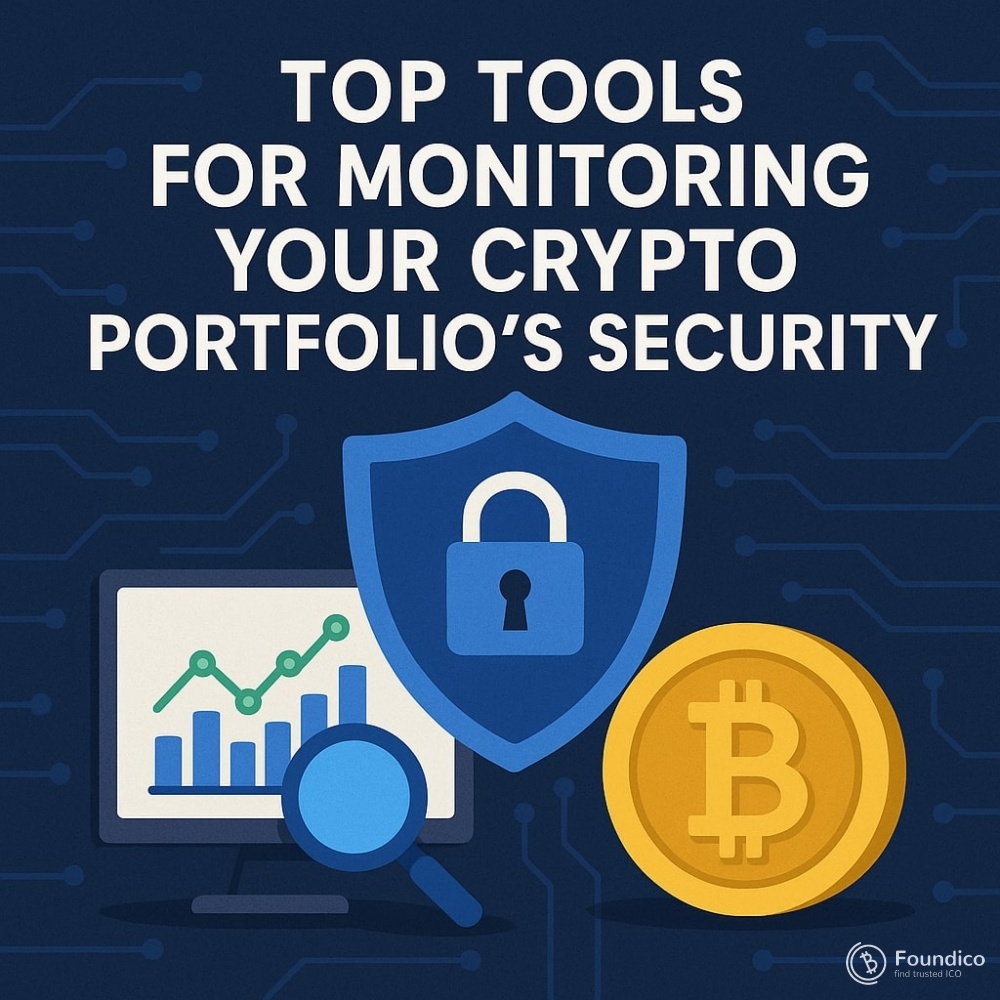Top Tools for Monitoring Your Crypto Portfolio's Security

By Dr. Pooyan Ghamari, Swiss Economist and Visionary
In the rapidly evolving world of digital assets, protecting one’s portfolio is just as important as growing it. With increasing incidents of exchange hacks, phishing schemes, malware, and rug pulls, investors cannot afford to rely solely on luck or blind trust. A secure portfolio demands constant monitoring, and fortunately, a range of tools now exists to help individuals and institutions safeguard their holdings.
Below, I outline some of the top tools and platforms every crypto investor should consider for monitoring and enhancing portfolio security.
1. Hardware Wallet Dashboards
Examples: Ledger Live, Trezor Suite
Hardware wallets are the gold standard for crypto storage, but many now come with advanced dashboards that allow users to monitor holdings in real time. These dashboards not only track balances but also alert users to firmware updates, provide phishing protection, and ensure that no transaction is executed without user verification on a physical device.
Why it matters: Direct control of private keys combined with monitoring dashboards offers layered protection against online attacks.
2. Blockchain Explorers with Security Alerts
Examples: Etherscan, Blockchain.com Explorer
Blockchain explorers allow users to track transactions, wallet activities, and smart contract interactions. Many explorers now include features such as flagging suspicious addresses, labeling known scams, or providing risk indicators for new tokens.
Why it matters: Real-time transparency ensures users can immediately verify whether transactions are legitimate or if unusual activity occurs in their wallets.
3. Portfolio Trackers with Built-in Security Tools
Examples: CoinStats, Delta, Kubera
While these apps are known for tracking price performance and portfolio value, some go further by integrating exchange API monitoring, suspicious login alerts, and even breach notifications. They centralize visibility across multiple wallets and exchanges, reducing blind spots.
Why it matters: Consolidating monitoring tools makes it easier to spot irregularities and respond quickly.
4. DeFi and Smart Contract Security Platforms
Examples: De.Fi (formerly DeFiYield), CertiK Skynet, RugDoc
With the growth of decentralized finance, many threats now arise from vulnerabilities in smart contracts. DeFi security platforms provide real-time monitoring of protocols, liquidity pool risks, and even token audits. Some offer dashboards showing “security scores” for protocols, helping investors make informed decisions.
Why it matters: DeFi investors are uniquely exposed to smart contract exploits, making these tools essential for risk assessment.
5. Exchange and Wallet Security Features
Examples: Binance SAFU Alerts, Coinbase Security Center
Major exchanges and custodial wallets increasingly offer advanced monitoring features such as suspicious login detection, withdrawal whitelisting, two-factor authentication (2FA) enforcement, and insurance-backed security alerts.
Why it matters: While self-custody is ideal for security, exchange users can leverage built-in safeguards as an additional protective layer.
6. Threat Intelligence and Monitoring Services
Examples: Chainalysis Kryptos, CipherTrace, Elliptic Lens
These enterprise-grade platforms track illicit activity across blockchain networks, monitoring transactions for links to money laundering, darknet markets, or sanctioned entities. While often designed for institutions, some services are now accessible to advanced retail investors.
Why it matters: Knowing whether your portfolio has exposure to tainted or high-risk wallets can protect against frozen assets and regulatory repercussions.
7. Password and Authentication Managers
Examples: 1Password, Bitwarden, YubiKey
While not crypto-specific, secure password management and hardware authentication tools form the backbone of portfolio security. Breaches often occur due to weak or reused passwords rather than blockchain exploits.
Why it matters: Protecting accounts linked to exchanges, wallets, and portfolio trackers ensures that attackers cannot bypass security layers through simple credential theft.
8. Community-Based Watchdogs
Examples: Reddit r/CryptoCurrency Alerts, Twitter Security Feeds, Telegram Watchdogs
Sometimes the fastest alerts about new scams or exploits come directly from community-driven channels. By joining well-moderated groups, investors can benefit from collective intelligence and early warnings.
Why it matters: While not always verified, community alerts can act as an early radar for potential threats.
Building a Personal Security Toolkit
No single tool guarantees safety. The most effective strategy is a layered one:
-
Hardware wallets for cold storage,
-
Portfolio trackers for consolidated visibility,
-
Blockchain explorers for transaction verification,
-
Threat intelligence services for high-level monitoring, and
-
Community alerts for grassroots awareness.
By combining multiple tools and approaches, investors can drastically reduce their exposure to risks while maintaining confidence in the security of their assets.
Final Thoughts
In the digital asset space, knowledge and vigilance are as valuable as the tokens themselves. Monitoring tools empower investors not just to track profits but to anticipate threats, respond proactively, and safeguard long-term wealth. In a decentralized financial system, responsibility for security falls directly on the individual—and the right tools can make that responsibility both manageable and effective.
About the Author
Dr. Pooyan Ghamari is a Swiss Economist and Visionary specializing in blockchain, digital finance, and global economic strategy. He advocates for combining technological solutions with community awareness to secure the future of cryptocurrency.
